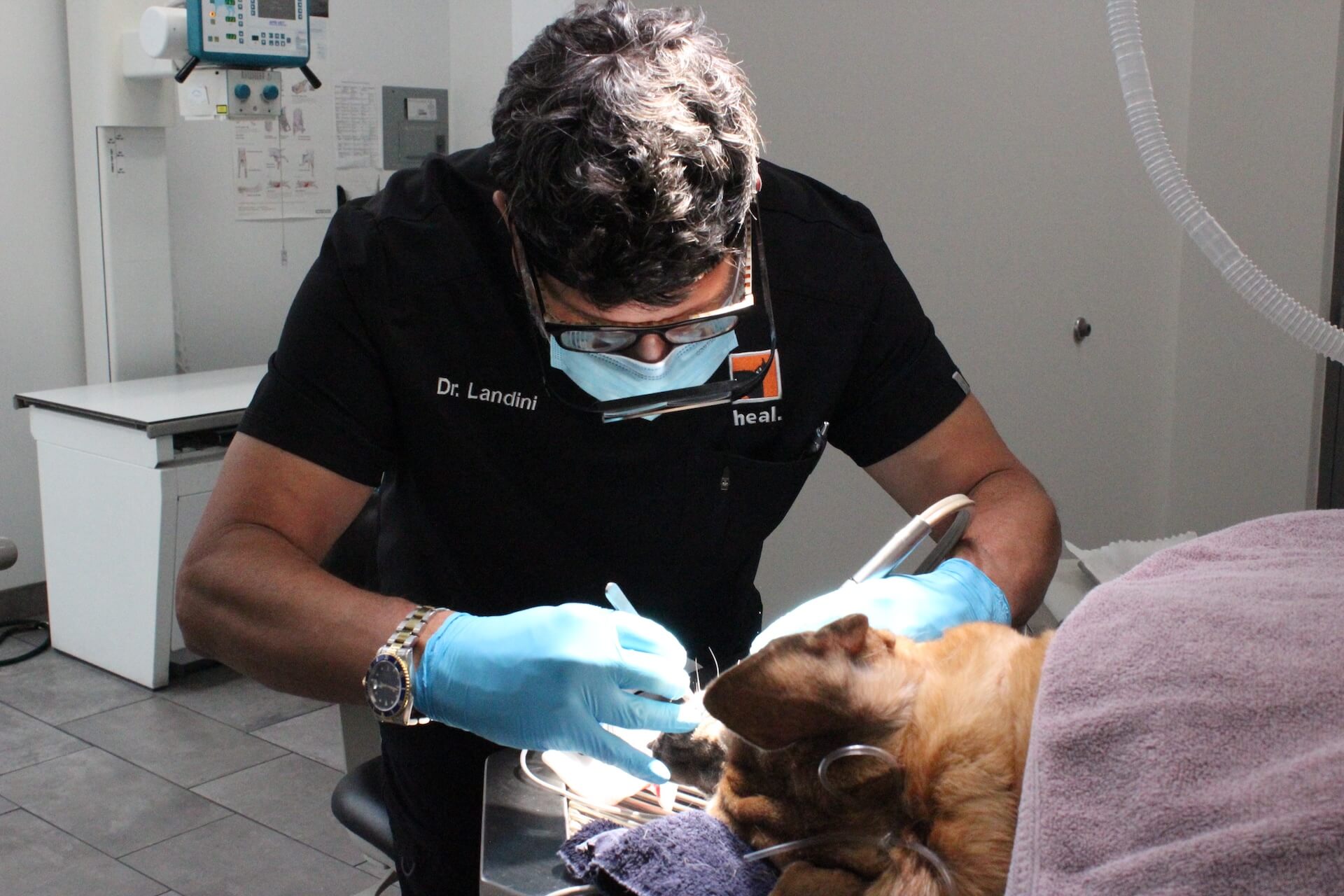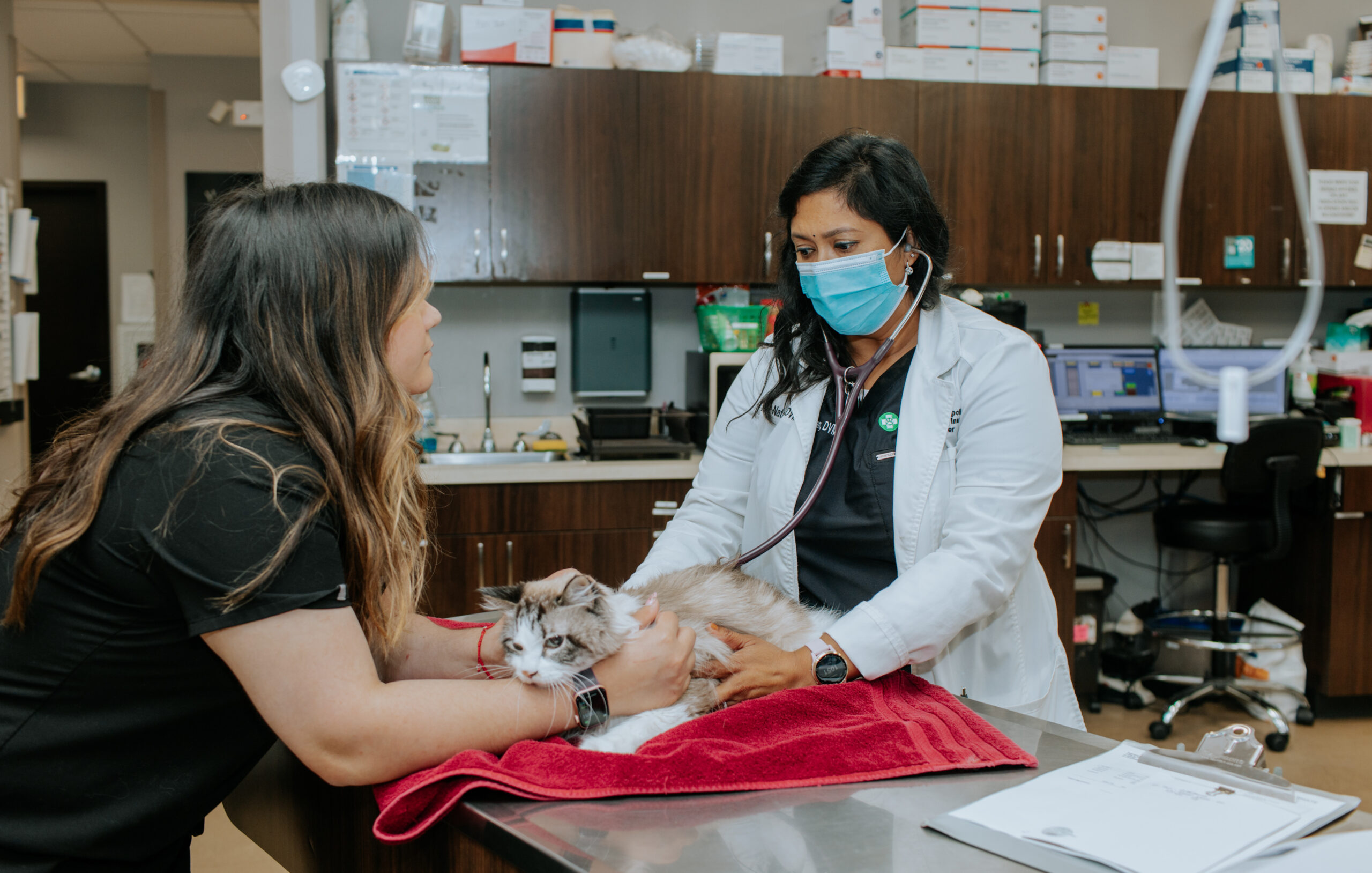When Every Second Counts: How an emergency vet Can Make All the Difference
When Every Second Counts: How an emergency vet Can Make All the Difference
Blog Article
All Concerning Veterinarian Surgical Procedure: Comprehending the Significance of Professional Treatment for Your Animals
Veterinary surgery is an essential element of family pet medical care. It encompasses numerous treatments, from regular elective surgeries to immediate treatments. Recognizing the ins and outs of these surgical procedures can help pet proprietors make informed decisions. The preparation, execution, and healing stages are essential for making sure the wellness of animals. With correct expertise, owners can navigate the complexities of vet care. What aspects should be taken into consideration before a pet dog undertakes surgical treatment?
Sorts Of Veterinarian Surgeries
When a pet calls for medical treatment, comprehending the different sorts of vet surgical treatments can assist family pet proprietors make educated choices. Veterinary surgical treatments can be generally classified into 3 primary kinds: elective, immediate, and emergency surgical treatments. Elective surgical procedures, such as spaying or neutering, are planned procedures that are not promptly deadly. Urgent surgical treatments, like those for international body removal, have to be performed quickly yet are not serious in the moment. Emergency situation surgical procedures, such as those attending to serious trauma or internal bleeding, are critical and need instant attention.Additionally, surgical procedures can differ in complexity, varying from minimally intrusive laparoscopic procedures to much more considerable open surgical treatments. Each type of surgical treatment brings its very own dangers and recuperation procedures. Understanding these classifications permits family pet owners to participate in purposeful discussions with vets, leading to much better end results for their cherished animals.
Planning for Your Animal's Surgical treatment
Getting ready for a family pet's surgery involves an extensive list to assure all essentials are covered. Efficient interaction with the vet is vital for comprehending the treatment and any essential pre-operative steps - tplo surgery for dogs. Furthermore, having clear post-operative treatment directions will help proprietors provide the most effective support for their recovering pet dogs
Pre-Surgery List Fundamentals
Ensuring a smooth surgical experience for a pet dog requires mindful prep work and interest to information. A pre-surgery checklist is crucial for pet proprietors to comply with. Initially, confirming the scheduled surgical treatment date and time is crucial. Owners ought to likewise verify that their pet has actually not eaten according to the veterinarian's guidelines, commonly for 8-12 hours prior to surgical procedure. Collecting required clinical records, consisting of vaccination history, is essential for the vet's evaluation. It is also a good idea to prepare a comfortable space in the house for the animal's recuperation after surgical procedure. Finally, proprietors ought to have a plan for transport to and from the vet clinic, making certain that the animal is secure and comfy throughout the journey. Complying with these steps can considerably enhance the medical experience.
Communicating With Your Veterinarian

Efficient interaction with the vet is vital for a successful medical experience for family pets. Owners must be prepared to review their pet dog's case history, including any type of pre-existing conditions, medications, and allergic reactions. This details assists the veterinarian evaluate threats and tailor the surgical strategy accordingly. Additionally, pet owners must ask inquiries regarding the procedure, anesthetic, and anticipated results to ensure they fully recognize the process. Making clear any type of questions can relieve anxiousness for both the pet dog and the proprietor. It is likewise crucial to connect any type of behavioral modifications or worries observed in the animal leading up to the surgical procedure. Ultimately, clear dialogue fosters depend on and cooperation, ensuring that animals get the most effective possible treatment throughout their surgical journey.
Post-Operative Treatment Directions
After going over the surgical treatment with the veterinarian, pet proprietors need to concentrate on post-operative care guidelines to facilitate a smooth recuperation for their pet dogs. These directions normally include keeping an eye on the surgical website for indications of infection, such as soreness or discharge. Pets may need to be kept one's cool and restricted to stop extreme movement that can interfere with healing. Pain administration is essential, so proprietors should follow the veterinarian's support on providing medications. Additionally, dietary limitations may be encouraged to stay clear of stomach upset. Regular follow-up appointments are necessary to guarantee proper healing and attend to any kind of problems. By adhering to these post-operative treatment directions, family pet proprietors can greatly add to their pet dog's recovery and overall wellness.
The Surgery Explained
The medical procedure for animals includes crucial steps that assure their safety and healing. Pre-surgery preparations are vital for decreasing dangers, while post-operative care guidelines play a vital function in advertising recovery. Recognizing these components helps family pet owners browse the medical experience extra successfully.
Pre-Surgery Preparations
Prior to a pet dog undergoes surgical procedure, numerous important preparations must take area to assure a secure and effective procedure. First, a detailed veterinary assessment is necessary to analyze the family pet's general health and wellness and identify any kind of prospective threats. This might include blood tests, imaging, or various other diagnostics. The veterinarian will also go over anesthetic options customized to the pet dog's specific demands. In addition, pet proprietors are generally advised to withhold food and water for a defined time before surgery to reduce the risk of complications during anesthesia. It is essential for owners to offer a complete medical history, consisting of any kind of medicines or allergies, making certain the surgical group has all necessary information. Appropriate interaction and adherence to pre-surgery guidelines can considerably improve the outcome of the treatment.
Post-Operative Care Standards
Appropriate post-operative care is important for ensuring a pet dog's recovery adhering to surgical procedure. After the procedure, family pets must be kept an eye on closely for any signs of complications, such as excessive blood loss, swelling, or unusual actions. It is crucial to comply with the vet's instructions concerning medications, consisting of discomfort relievers and prescription antibiotics. Family pets need to be kept in a quiet, comfortable environment to minimize tension and advertise recovery. Restricting activity is important; short, leashed strolls may be required, but jumping or running should be avoided. Regular follow-up consultations should be arranged to examine the healing procedure. In addition, the surgical website has to be maintained clean and dry, with any type of signs of infection reported to a vet promptly. Adhering to these guidelines enhances healing end results.
Anesthesia and Pain Administration
Effective anesthetic and pain monitoring are crucial components of vet surgical treatment, guaranteeing that pet dogs remain comfy and safe throughout the procedure. Veterinarians assess each pet dog's specific demands, taking into consideration aspects such as age, weight, wellness standing, and the sort of surgery being performed.Anesthesia protocols typically consist of a combination of pre-anesthetic drugs, induction representatives, and inhalant anesthetics, permitting for exact control over the pet's level of awareness. Monitoring throughout surgical treatment is vital; veterinarians continually observe essential signs to resolve any kind of prospective difficulties promptly.Pain monitoring approaches may include opioids, non-steroidal anti-inflammatory medicines (NSAIDs), and anesthetics, tailored to the family pet's details circumstance. This diverse strategy assists reduce discomfort and promotes a smoother medical experience. By prioritizing efficient anesthetic and pain monitoring, vet professionals boost the general well-being of pets undertaking operations, guaranteeing they get the greatest criterion of care.
Post-Operative Care and Healing
Adhering to surgical treatment, the focus shifts to post-operative care and recuperation, which is important for making certain an animal's risk-free return to regular tasks. Throughout this period, pets need a silent, comfortable atmosphere to help recovery. Proprietors need to very closely check their family pets for any type of signs of pain or unusual behavior.Veterinary standards frequently include specific guidelines associated to drug management, wound treatment, and nutritional changes. It is important to stick to these suggestions to lessen complications and advertise recovery. Pet dogs might need to be limited from strenuous tasks, such as running or leaping, during their recuperation period (canine tplo surgery).Regular follow-up consultations with the veterinarian allow for surveillance of the animal's development and prompt changes to the care plan. Supplying psychological support and companionship can likewise enhance an animal's recuperation experience, assisting to ease anxiety and anxiety. Generally, persistent post-operative treatment plays a considerable duty in attaining a successful recovery
Identifying Issues After Surgical Treatment
Exactly how can family pet proprietors determine issues after surgery? Recognition of specific indicators is crucial for ensuring the wellness of pets during recovery. Typical signs consist of extreme swelling, redness, or discharge at the medical website, which may signify infection. Furthermore, consistent pain, shown by whining or hesitation to move, must read more trigger immediate focus. Changes in cravings or water intake can also show issues; a reduction in these actions might signal discomfort or distress.Moreover, pet dog owners need to monitor their pet dogs for any type of uncommon behavior, such as sleepiness or difficulty breathing, as these can be signs of major concerns. Throwing up or looseness of the bowels following surgical treatment might call for urgent veterinary evaluation. Identifying these problems early can substantially influence an animal's recuperation procedure, stressing the relevance of alertness and prompt interaction with a veterinarian for any type of concerning signs and symptoms.
The Duty of Vet Professionals in Surgical Treatment
Veterinary experts play an important duty in making certain the safety and security and success of operations for family pets, particularly adhering to surgical treatment when keeping an eye on and treatment are critical. These professionals consist of vets, veterinary professionals, and support staff, every one of whom add specialized abilities to the surgical process.Before surgical procedure, veterinarians perform detailed assessments to examine the animal's health and wellness, making sure that any kind of hidden problems are managed. Throughout the procedure, the medical group provides anesthesia, maintains sterile settings, and keeps track of crucial indicators, all vital for lessening risks.Post-operative treatment is just as substantial; veterinary specialists observe for issues, take care of discomfort, and overview proprietors on recovery techniques. Their know-how enables them to acknowledge early indicators of distress or infection, making certain prompt treatment. Inevitably, the joint initiatives of veterinary experts in surgical care cultivate a risk-free setting, advertising the well-being of animals throughout the surgical trip.

Frequently Asked Questions
Just how Do I Select the Right Veterinary Surgeon for My Pet?
Choosing the ideal veterinary surgeon involves investigating qualifications, reviewing reviews, and examining the clinic's environment. It is vital to review the specialist's experience with certain procedures and their interaction design when deciding.
What Are Usual Misconceptions Concerning Vet Surgeries?
Common misconceptions about veterinarian surgical procedures consist of beliefs that they are constantly high-risk, unneeded, or for emergency situations. Lots of family pet owners undervalue the advantages of preventive procedures and the skill associated with vet surgical treatment.
Just How Much Will My Pet's Surgical treatment Cost?
The cost of a family pet's surgical treatment can vary substantially based on factors such as the kind of treatment, the veterinarian's experience, and geographical location (emergency vet near me). Normally, expenditures range from a few hundred to several thousand bucks

Can My Animal Consume Prior To Surgical Treatment?
Before surgical treatment, it is normally recommended that pets refrain from eating for a particular duration. This fasting helps in reducing the threat of problems during anesthesia. Owners must consult their veterinarian for accurate instructions customized to their pet's demands.
Suppose My Pet Has Pre-Existing Health And Wellness Issues?
When a family pet has pre-existing wellness conditions, it's crucial for the veterinarian to assess these elements before surgical treatment. This examination assurances proper safety measures are taken, lessening threats and enhancing the pet dog's total security during the procedure.
Report this page